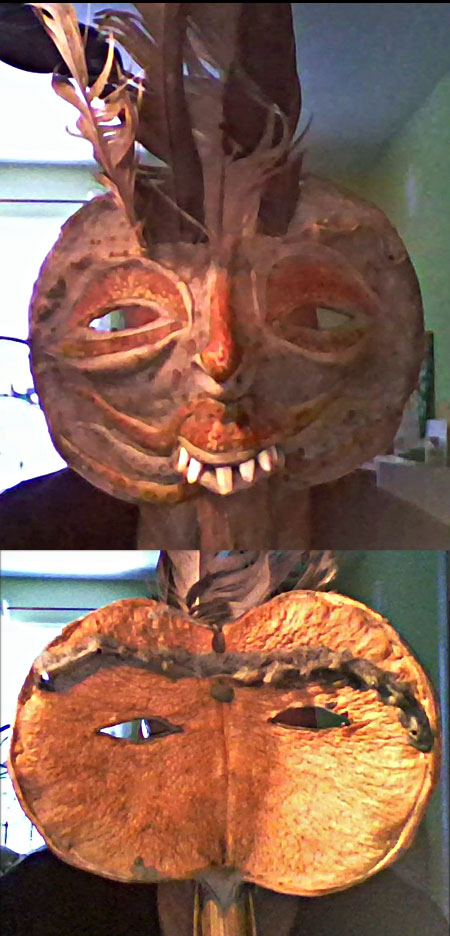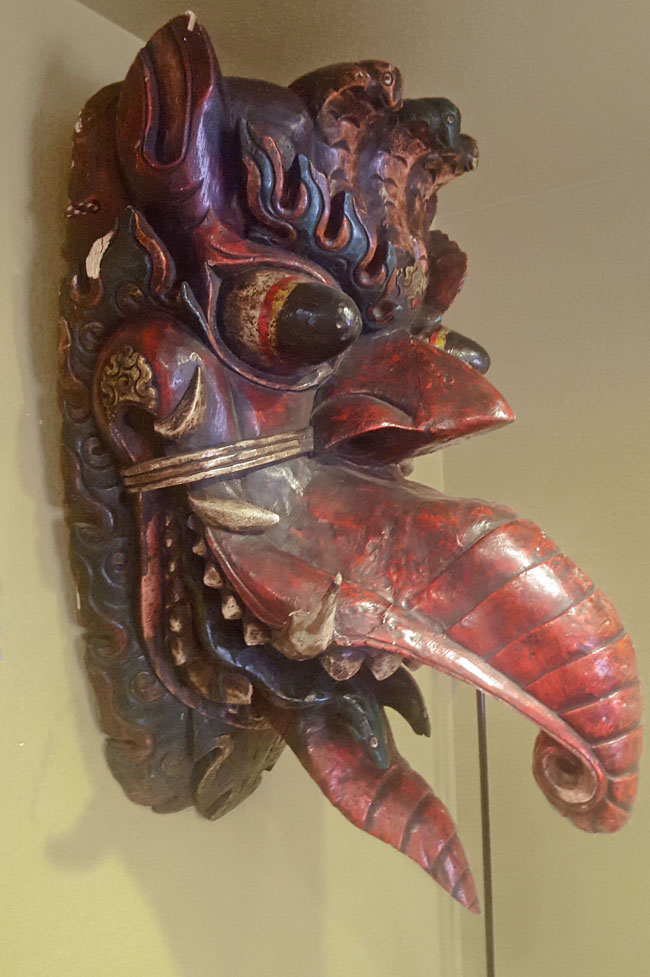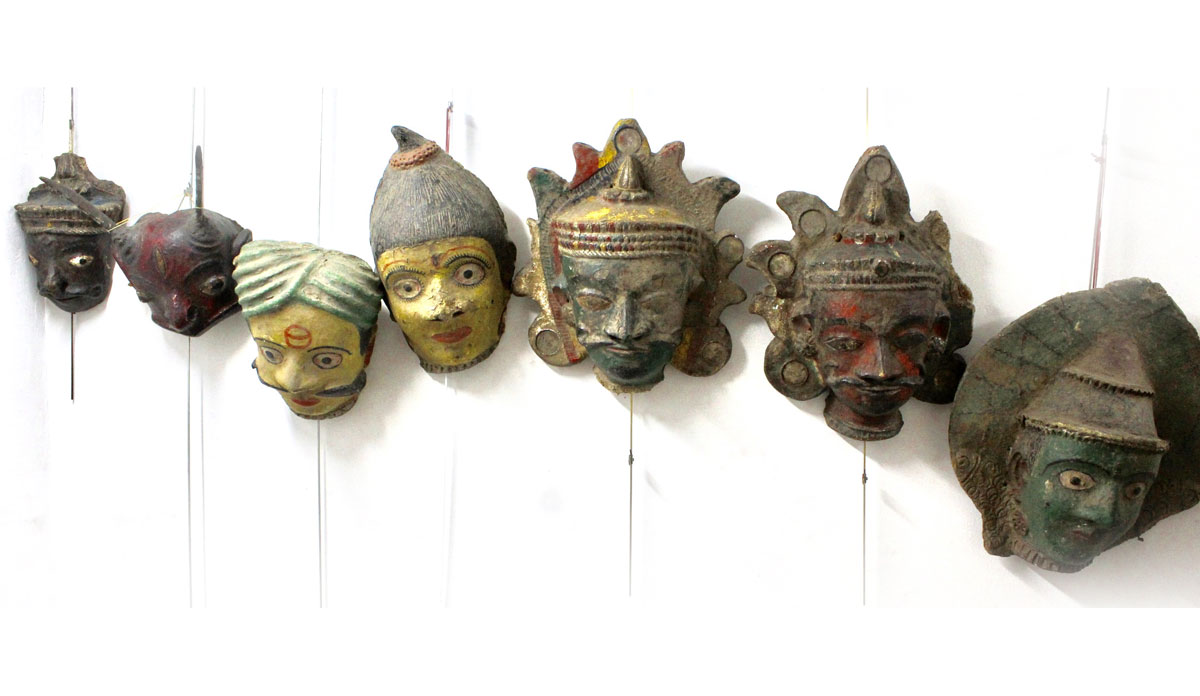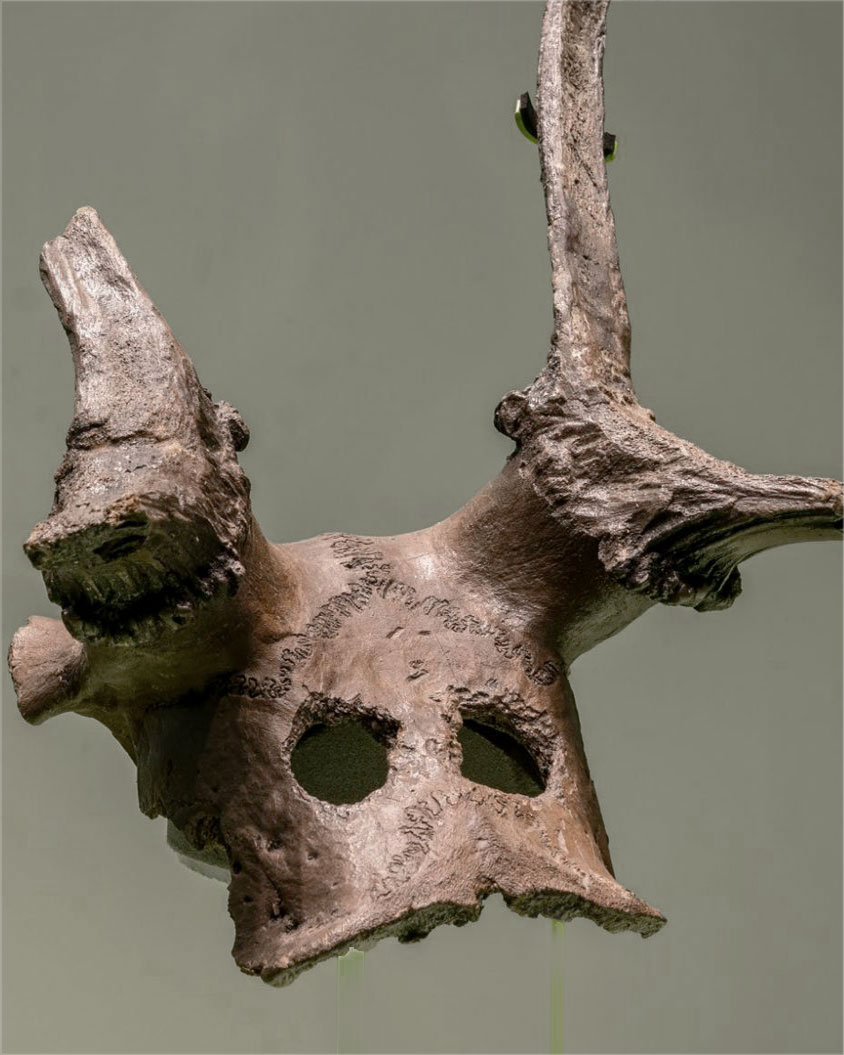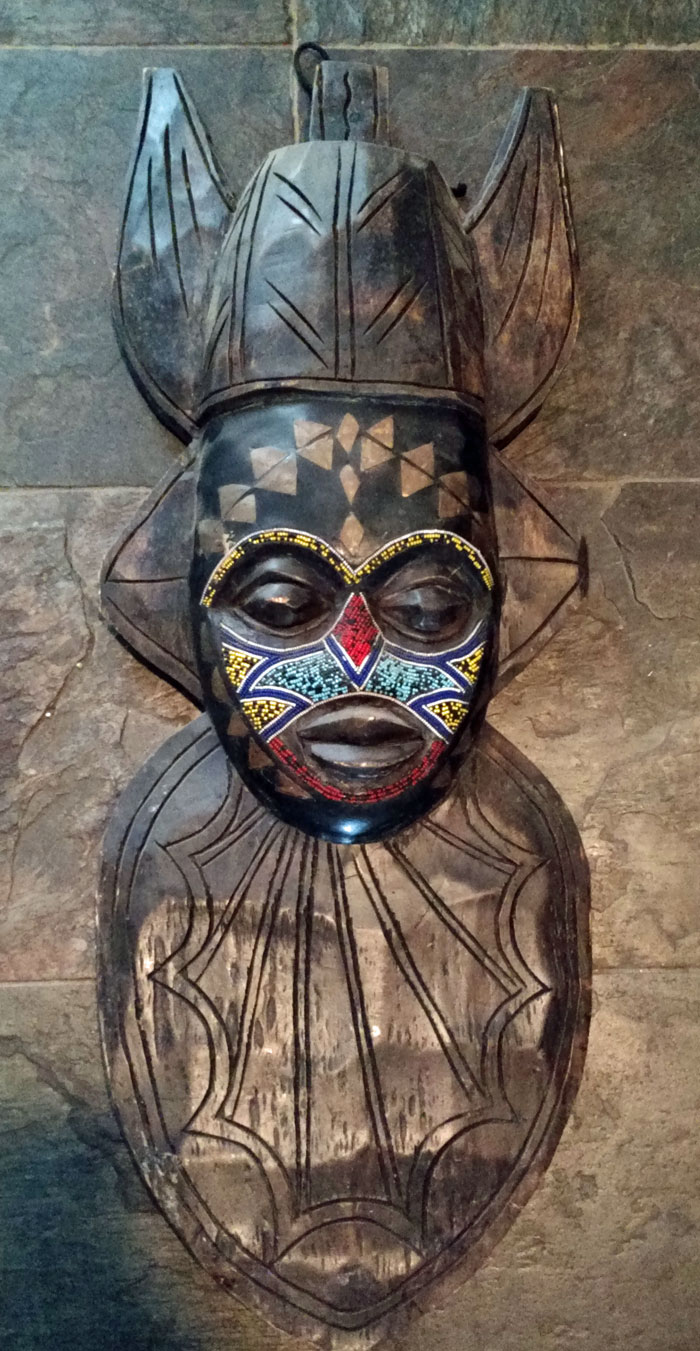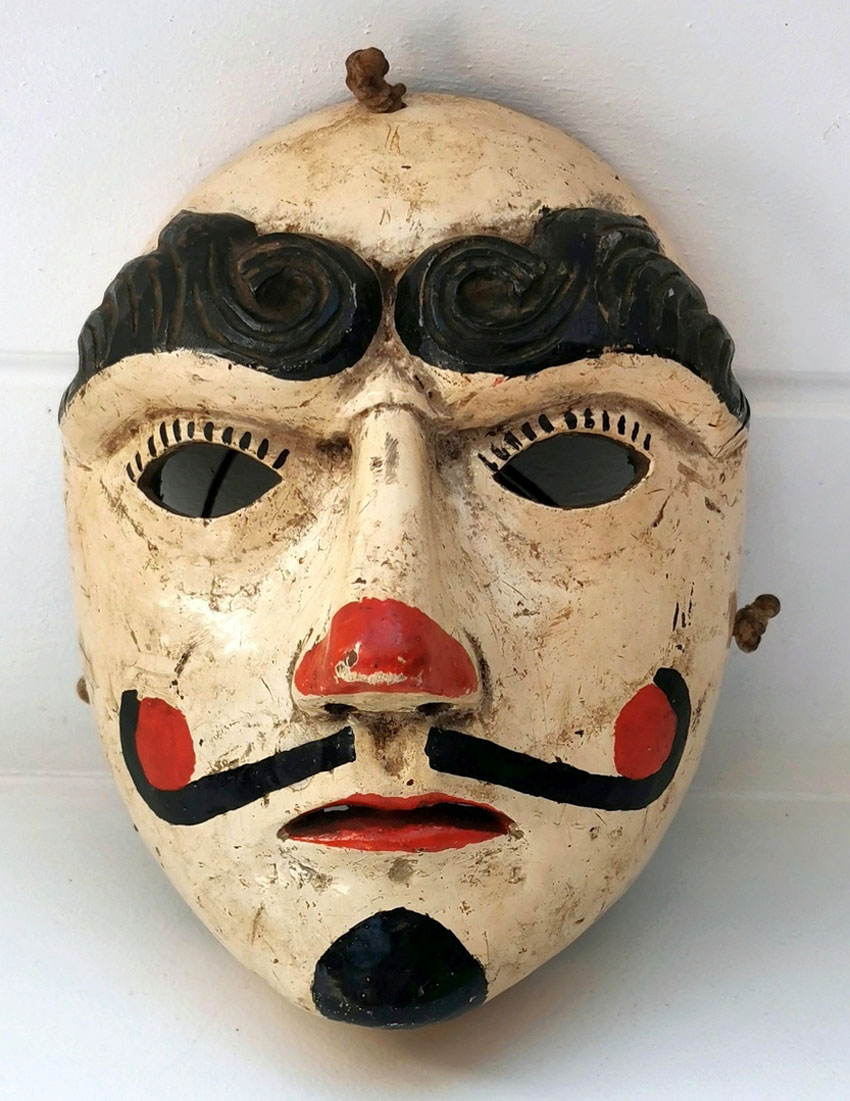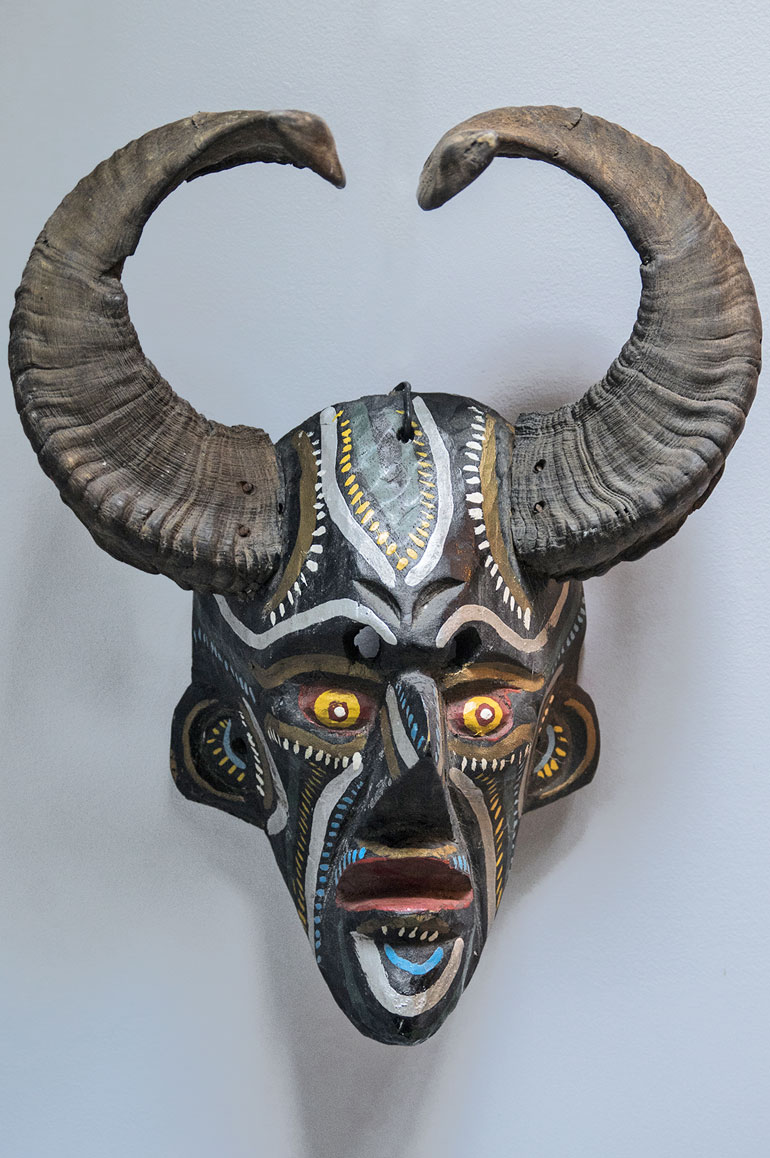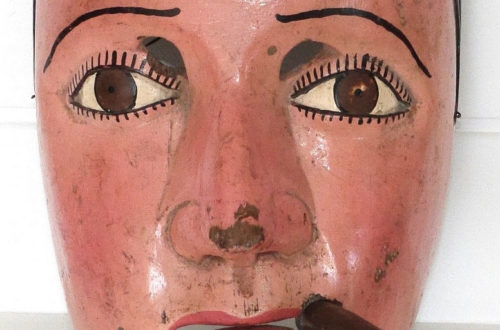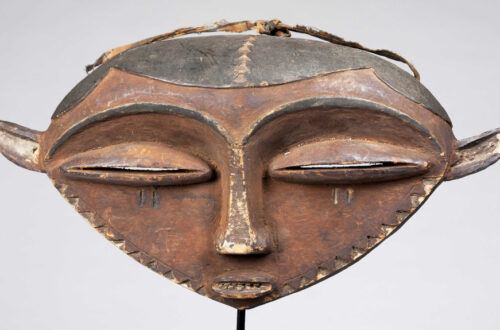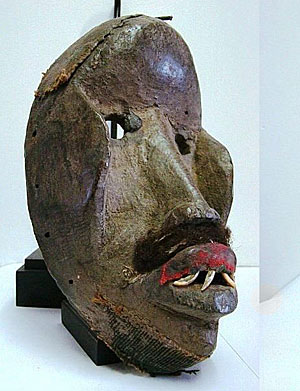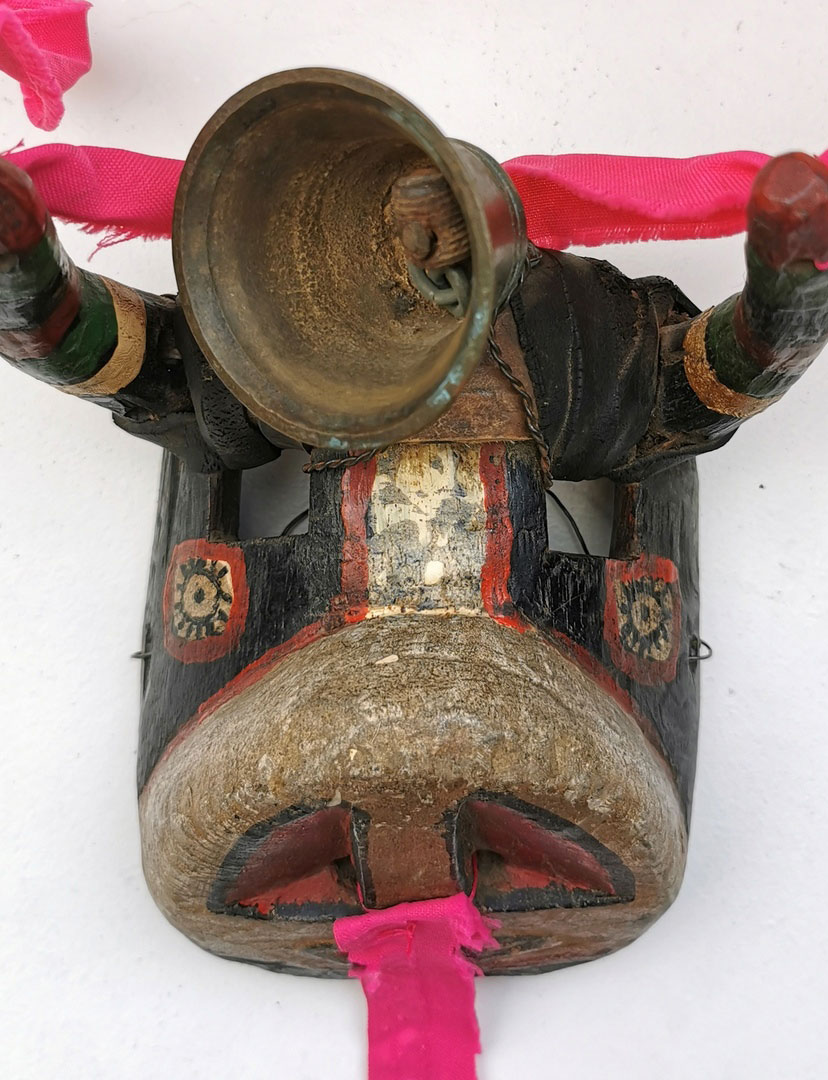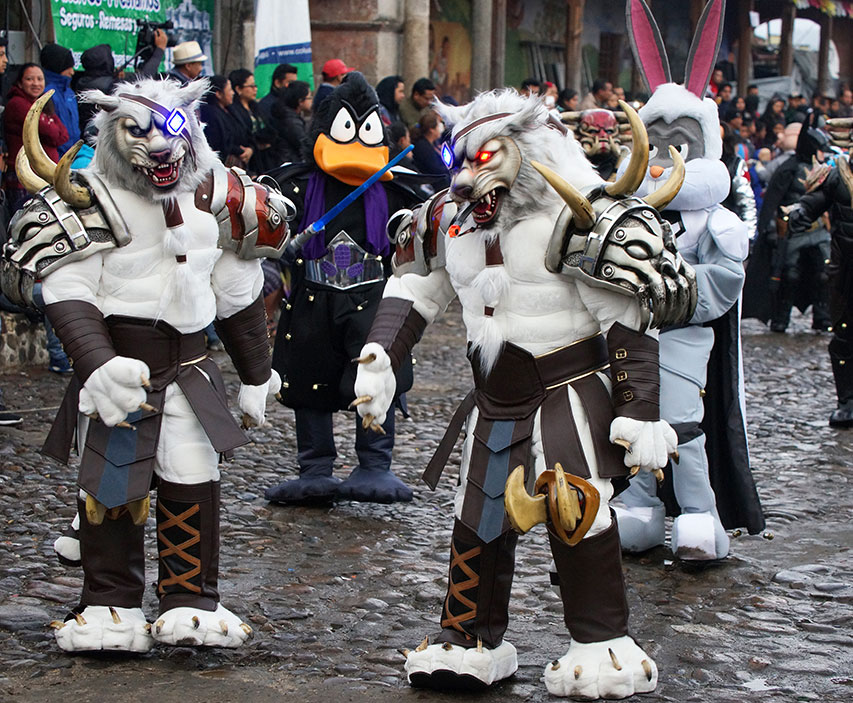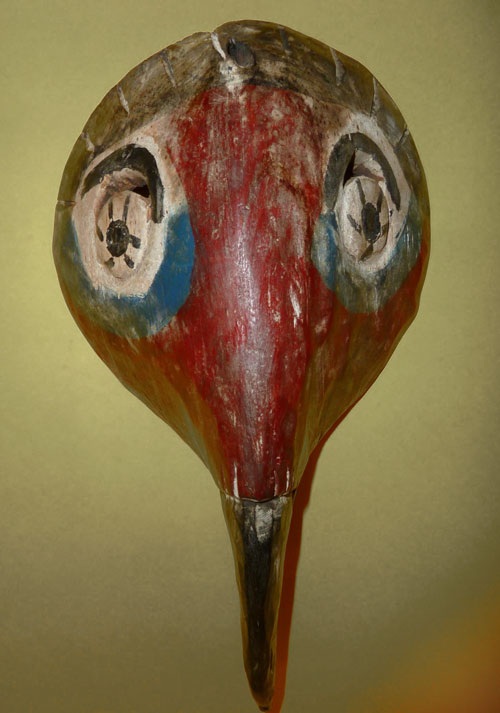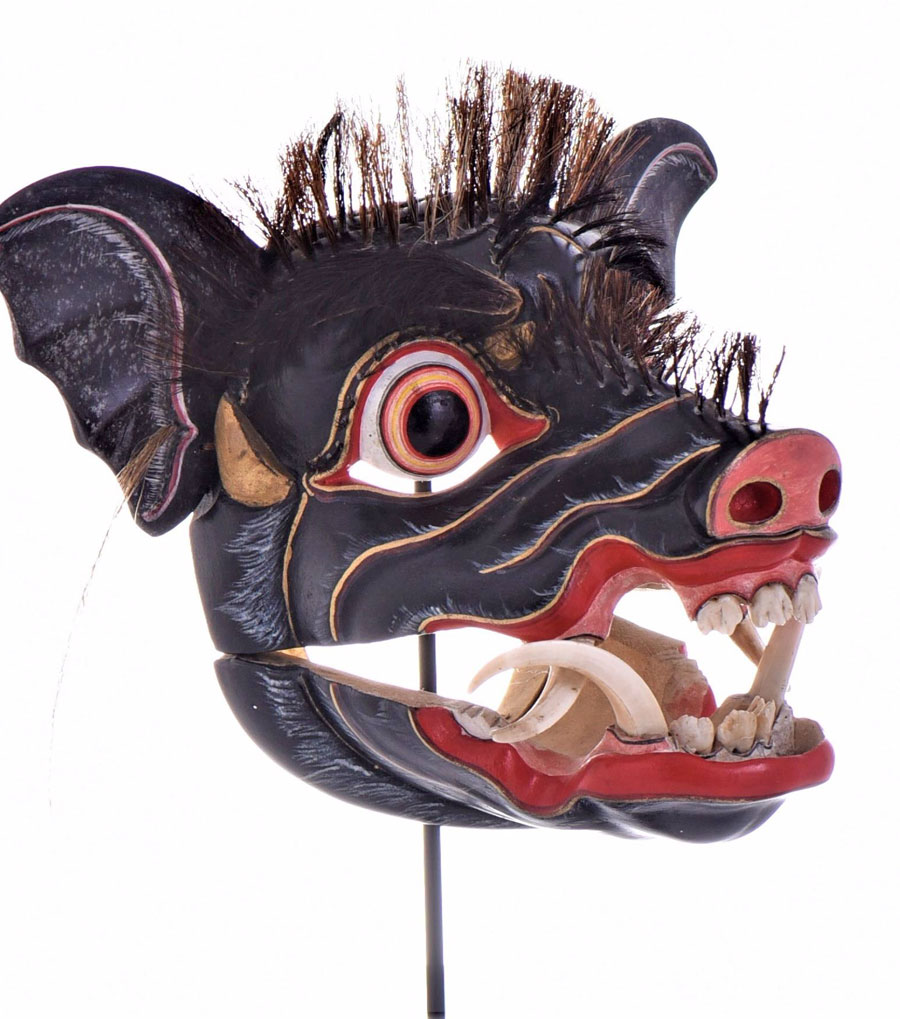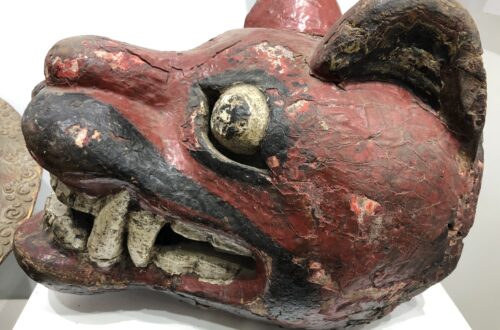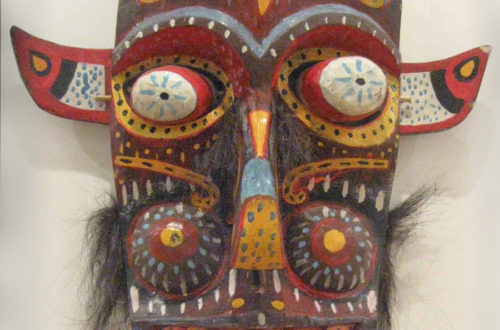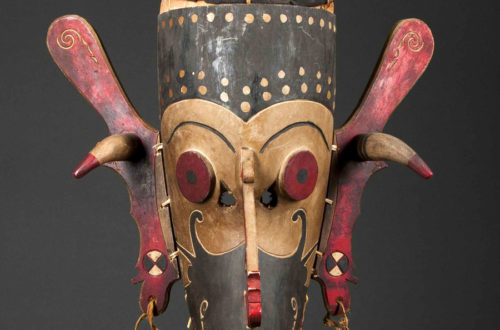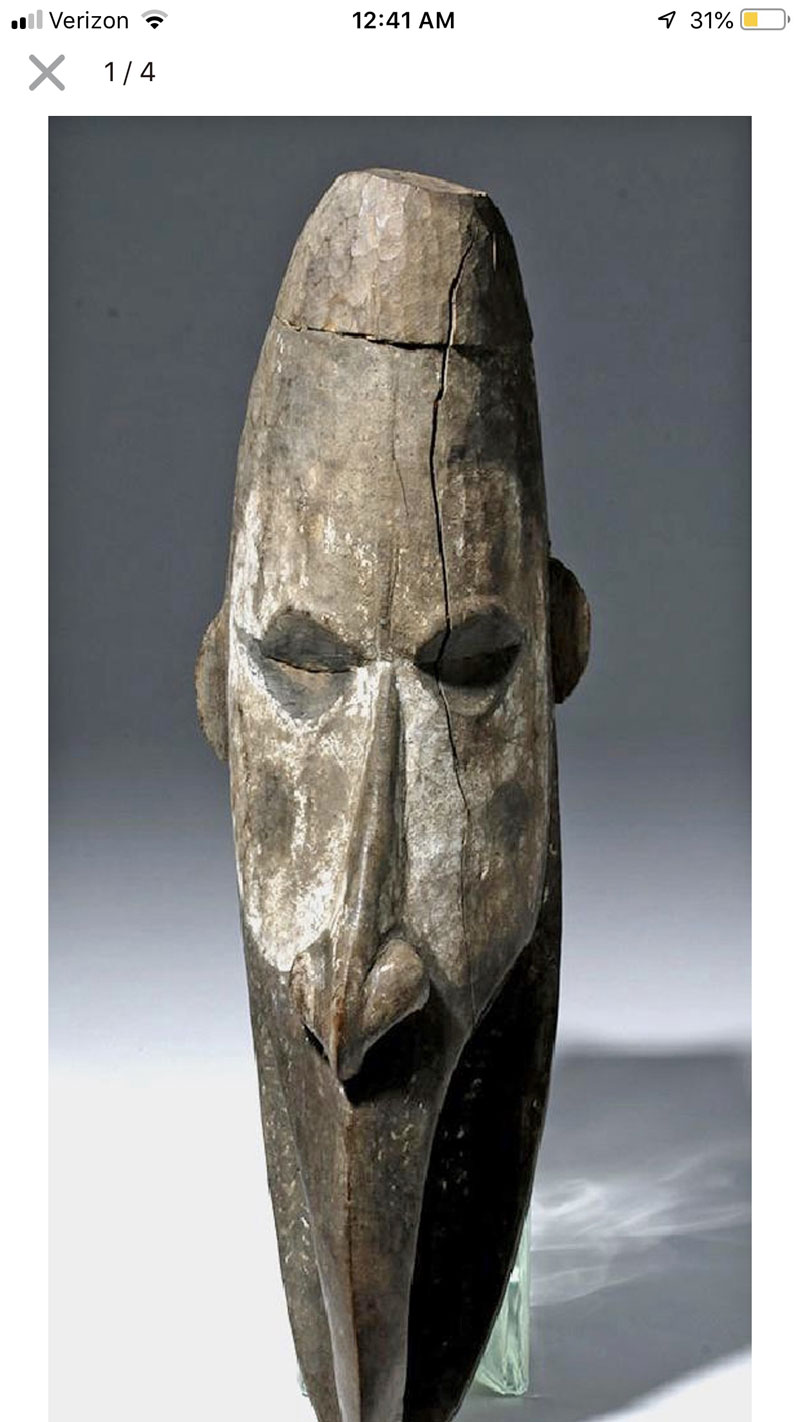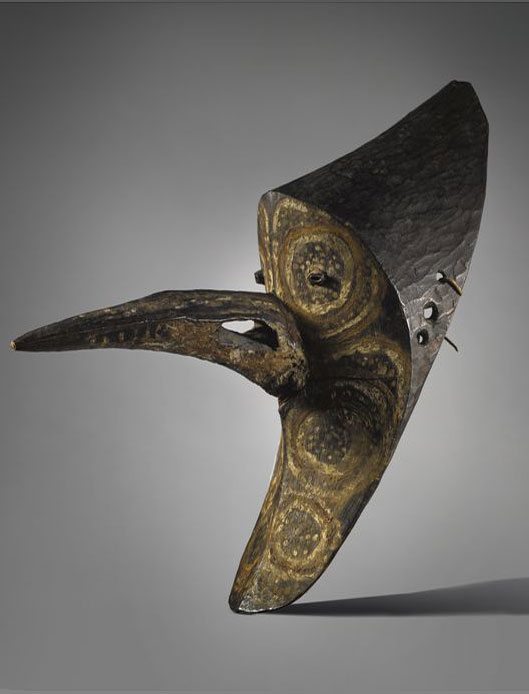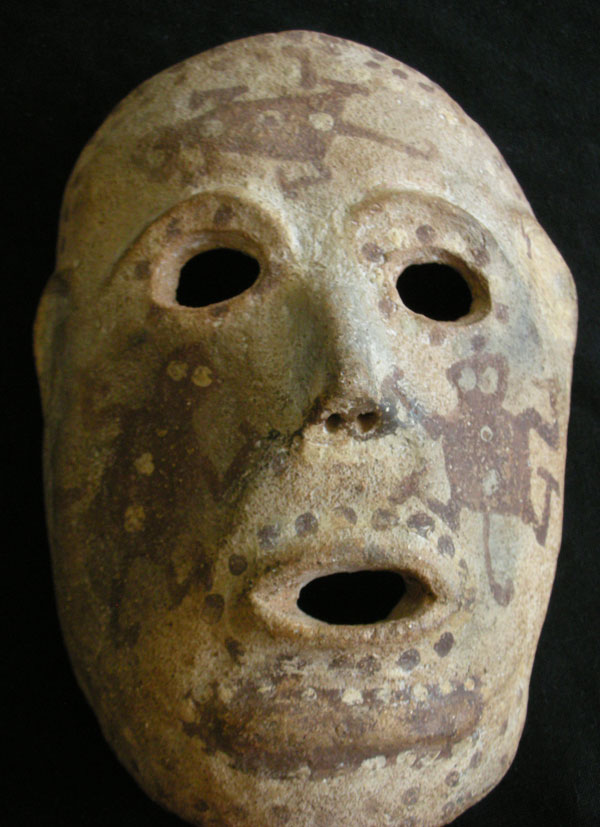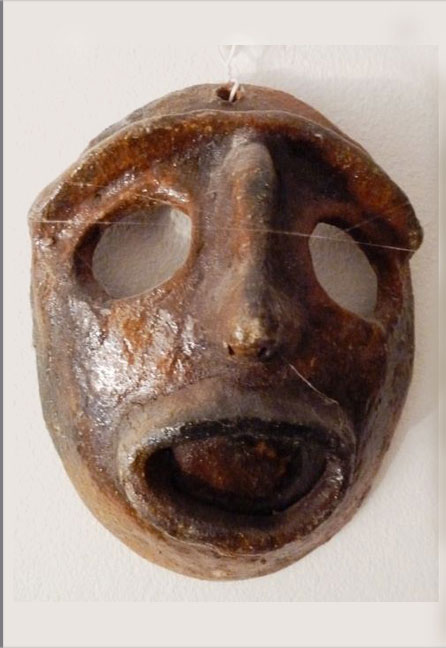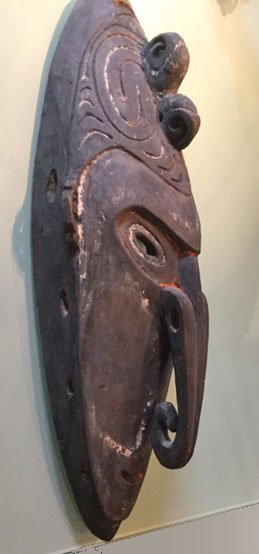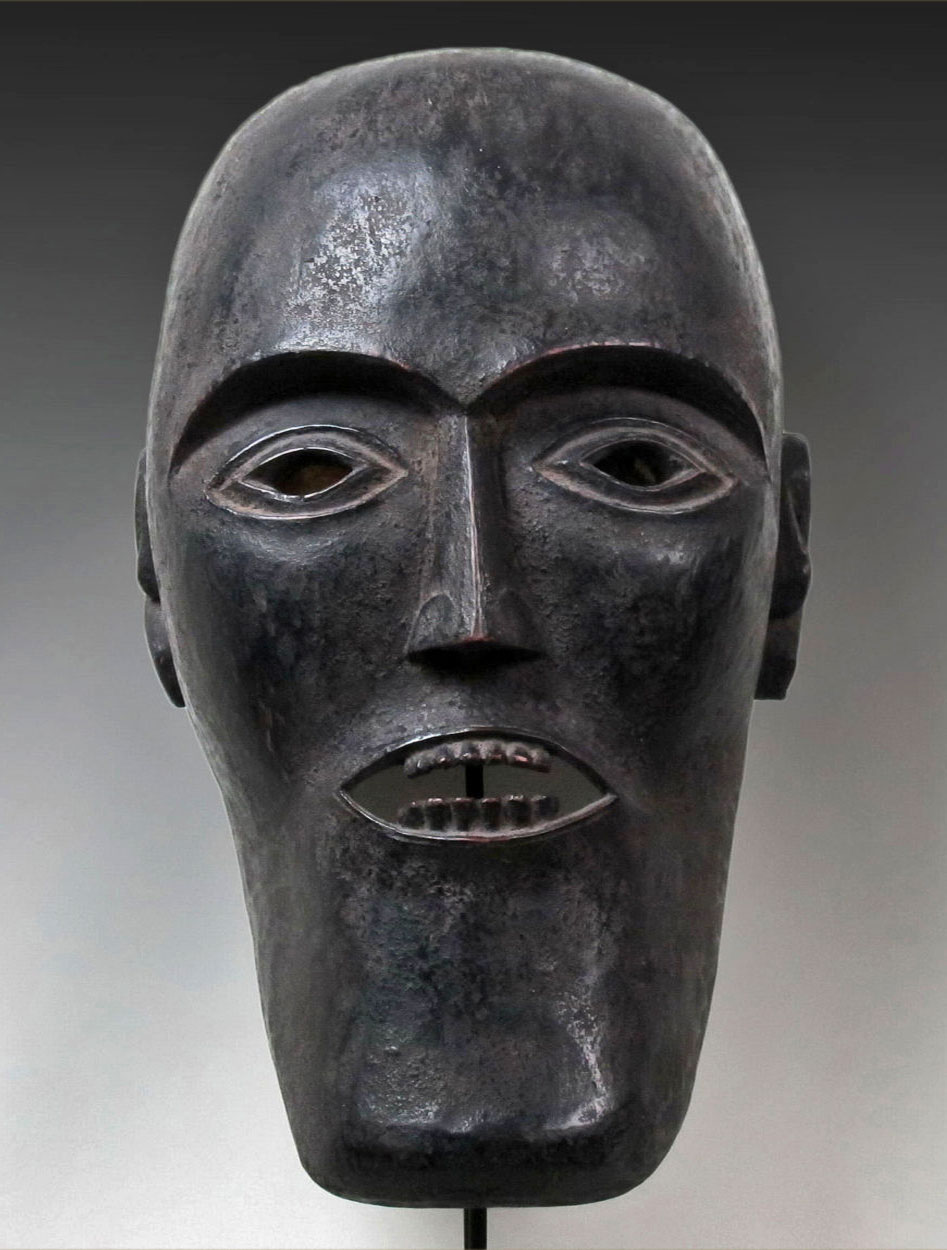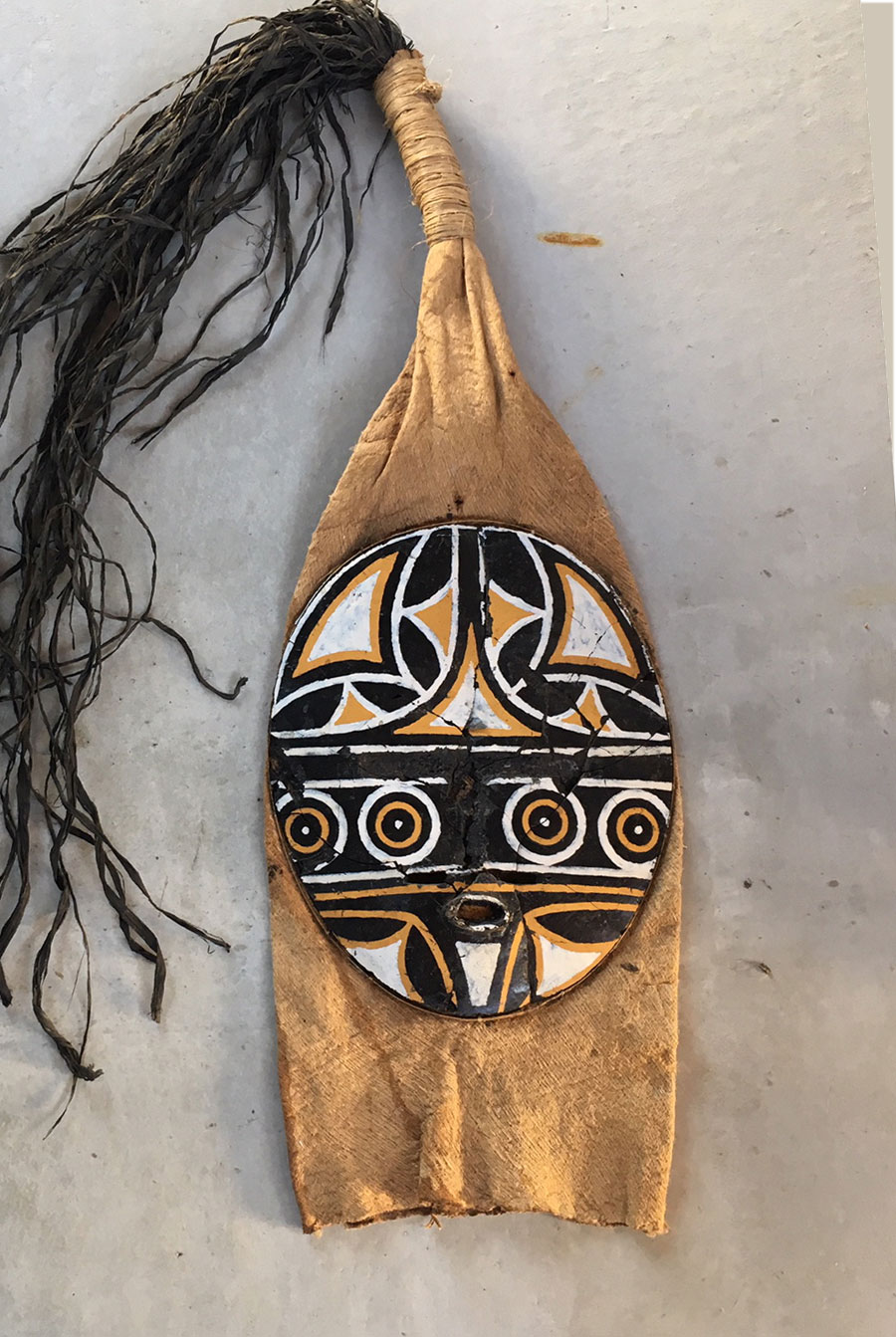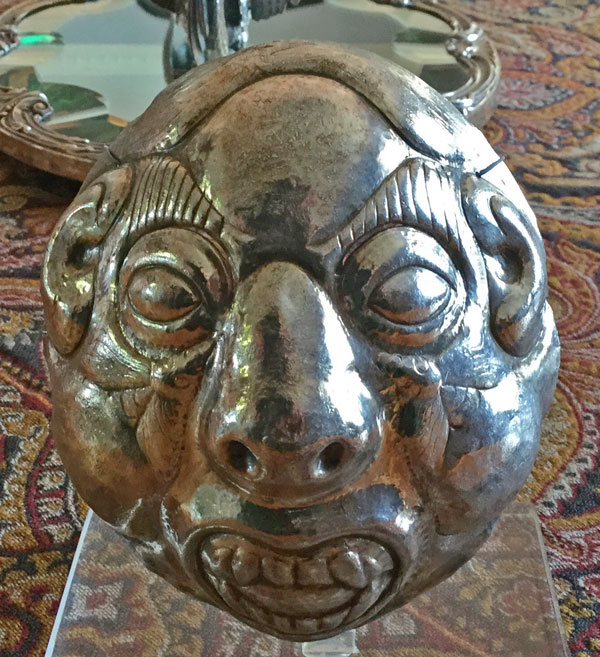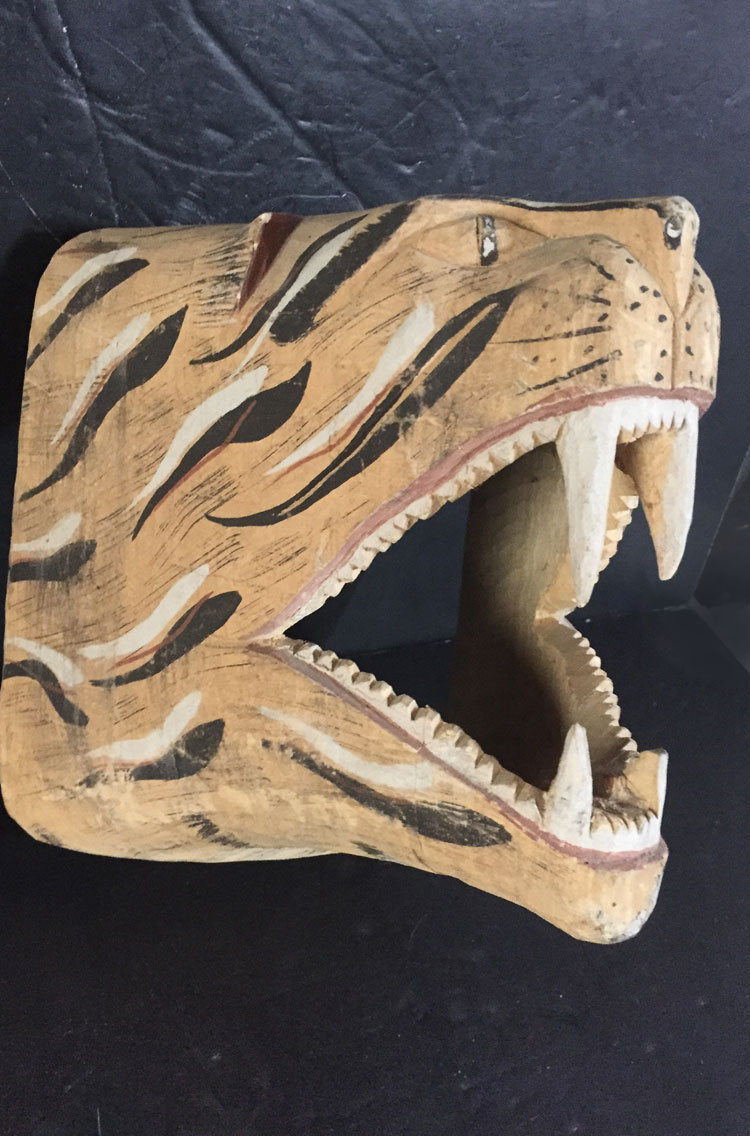Q: I recently purchased this mask for my collection and have had zero luck identifying it’s origin. It measures 9″ across x 12″ tall x 5″ deep. It is made of some variety of ceramic clay–possibly terracotta in part. The back side includes speckling but I am not knowledgeable enough to discern authentic from reproduction but am leaning toward older reproduction? Thanks much! JC, 1604 A: This could be an ancient burial mask, or maybe a piece of decorative art. It is not a real mask made for usage by a live human. It is too large, impossible to wear on the face, and easy to damage. Having said that,…
-
-
Old mask purchased in Kerala, India
Q: I was wondering if anyone could help with this mask from India. Any insights would be appreciated. It was bought in Kochi (Kerala) in 2008 from one of the main antiques stores in the old town, but sadly not much more information survived when it was passed on to me. The mask still carries faded but quite vivid yellow on most parts of the face and purple on the eyelids and headband. There is an indentation from the headgear down all around the face, as well as three dotted indentations above the lips. Behind the ears are two holes, presumably for hanging the mask. The back has two written…
-
Deer Skull Masks Made 11,000 Years Ago
Over 11,000 years ago, people in Star Carr were carving eyeholes into the crania of dead deer, presumably using the stone tools found at the northern Yorkshire site. As of Thursday, three of the 33 evocative headdresses made by the Mesolithic-era hunter-gatherers out of deer skulls, and other miraculously preserved artifacts, are on display at Cambridge University’s Museum of Archaeology and Anthropology. Ordinarily, all that latter-day archaeologists find from the distant past are stone and pottery artifacts that don’t suffer decay. There are exceptions, such as peat bogs in which the oxygen-breathing bacteria of rot cannot live. In Yorkshire, northern England, the waterlogged ground at Star Carr almost miraculously preserved…
-
Patzcar Patron mask from Guatemala
Q: Taking a look at the posts concerning Guatemala on your website, I found the one from 13/01/2018 (“Repro of Patron mask from Guatemala”). Maybe you will find interesting this Patrón, a nicely carved example, not very old, dating probably from the mid-20th century and showing a nice patina on the back. Cedar hardwood. Dance Patzcar, mainly Nahualá and around (province of Sololá). Very similar to the one presented on “https://mexicandancemasks.com/?p=3895”. For details and pics about the Patzcar family of dances, see “Masks of Guatemalan Traditional Dances, Brown and Rossilli, 2008, vol 1, pg251-276. As mention there, these dances are erroneously mixed up by some authors (including Pieper in his…
-
Baga snake headdresses from Guinea Bassau
Most mask collectors also like to display headdresses as well. They are used by tribal dancers for the same purpose as masks. Headdresses can be quite tall. These three are in the 40 to 50 inch range. What I like especially about the Baga snakes is that they are perfect tall sculptures. I can’t think of a European sculpture who quite measures up to this degree of fine art… well maybe Giacometti or Brancusi. With sinuous curves and reptilian form, this large wooden carving represents the Baga Snake, or Bansonyi, a protective spirit that presides over male initiation rites of the Baga people of Guinea Bassau, on the coast of…
-
Rare torito mask from Guatemala
Q: Torito masks are common in Guatemala. There is already several examples on your site. Most are big with ears and horns, frequently a visible tongue, actually relatively realistic. There is one dance where the toritos masks are totally different and very specific, the Patzcar dance in the province of Sololá, frequently around Nahuala. Here is a nice used example of this type, probably mid XXth (40ies). The front bell and colorful ribbons are very typical of these masks. They are very small, not exceeding 6.5 inches, much smaller than the usual toritos masks used elsewhere in Guatemala, that can measure up to 8-9 inches. 1599, Jean Obscure Find A:…
-
2 wild boar masks from Bali
Bali is an island that represents a very small part of Indonesia, and yet they produce many beautiful masks for their traditional dance dramas and the many tourist that visit. Most collectors are familiar with them. But these boar masks are unusual, especially the second one. If you know something about them, please use the comment box to tell us a little more.
-
Is this PNG mask really old?
Q: Described as a late 19th to early 20th century gable mask from Papua New Guinea. What are your thoughts on quality/value/authenticity? Acquired from Artemis Gallery (ex-Adeon Gallery). Jon, 1597 A: You asked about quality, value and authenticity. The quality, (if that means appearance), is very good in my personal opinion. The value would depend on whether it was carved with natural tools or steel tools. It is very difficult for me to answer this when I can only look at 72dpi scans. Notice that the rear of this very traditional Sepik River area mask is flat. That is because many of the various ethnic groups also use masks to…
-
Q: Described as a late 19th to early 20th century gable mask from Papua New Guinea. What are your thoughts on quality/value/authenticity? Acquired from Artemis Gallery. Ex-Adeon Gallery. Jon, 1597 A: This appears to be an old mask from the Sepik River area of Papua New
-
Modern Amazon Indian mask
Q: I’m really just interested in the mask details as it’s really cool but heavily damaged. There really is no side as the mask is flat so I did a wide front, tight front and back. The hood appears to be very tightly woven burlap of some kind; possibly two or more layers of weave pressed together. I believe the mask is a very low temperature clay of some kind as it’s fairly brittle. There may be hairs in the clay. The clay appears to be coated with at least one layer of base coat before being painted over; possibly for smoothing or structure or simply color. There is a…


